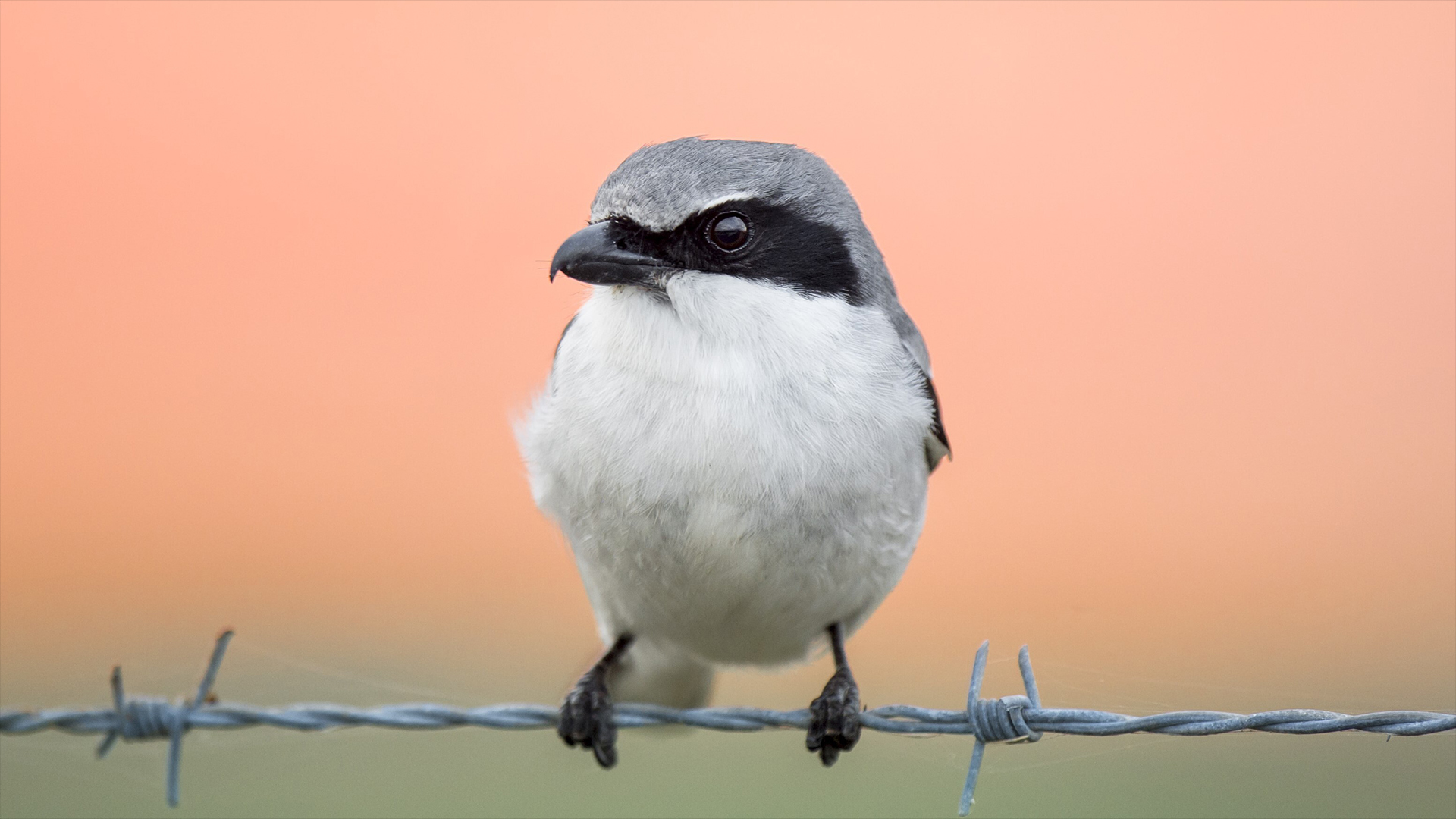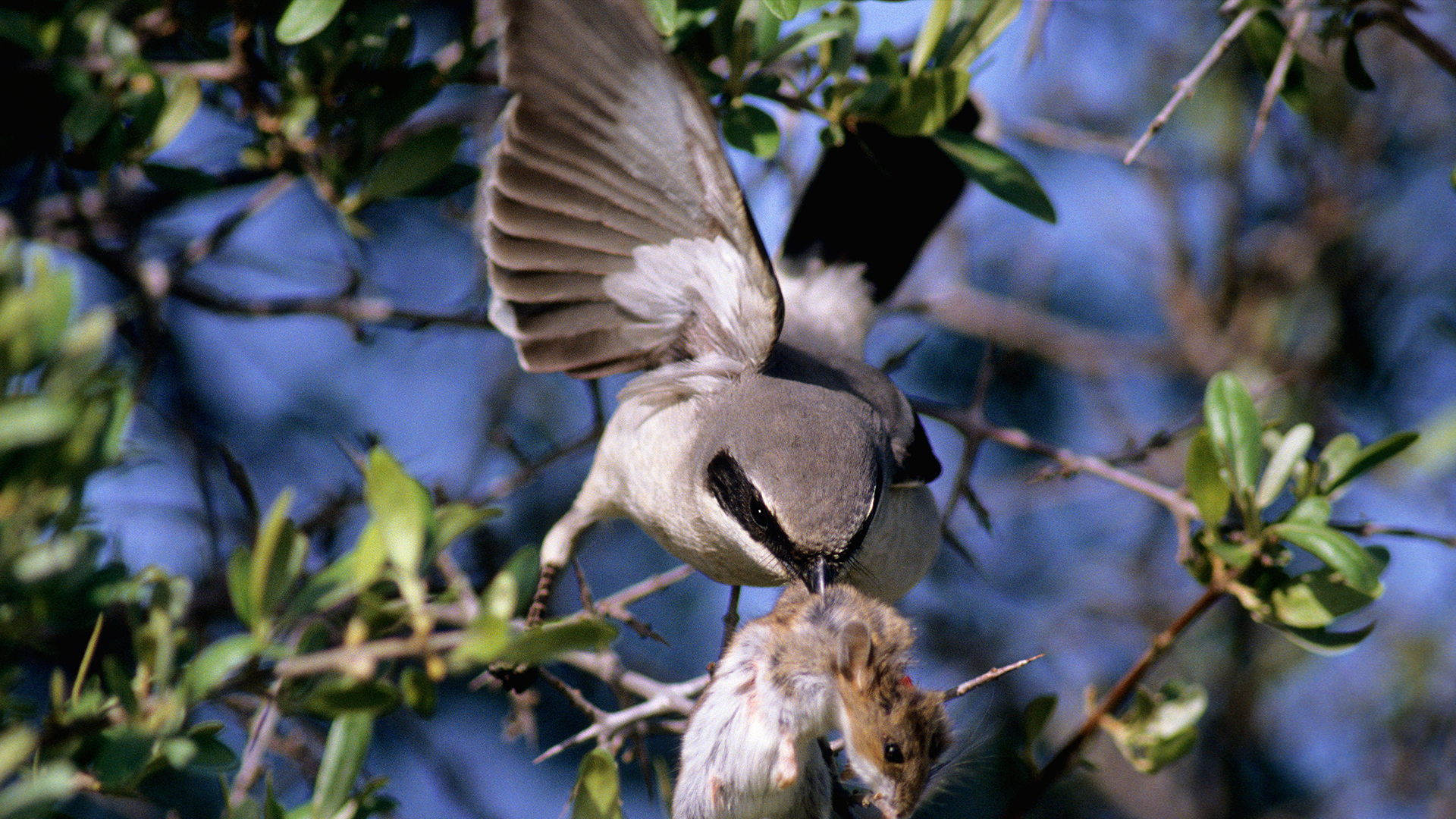Loggerhead shrike: The brutal 'butcherbird' that impales its prey on barbed wire
Loggerhead shrikes can kill prey bigger than themselves by stabbing and shaking them, before impaling them on sticks to eat later.

Name: Loggerhead shrike (Lanius ludovicianus)
Where it lives: North America
What it eats: Mainly invertebrates, but also small vertebrates including reptiles, amphibians, bats and birds.
Why it's awesome: The loggerhead shrike is nicknamed the "butcherbird" thanks to its rather gruesome practice of impaling its prey on sharp thorns, twigs and barbed wire.
This little songbird, which can take down prey heavier than itself, waits patiently on high perches — sometimes using telephone wires — and keeps a look out for a potential meal.
Related: Adult albatrosses found gnawed to death by mice on 3rd remote island
Once it spots a victim, it swoops down and uses its raptor-like hooked beak to make the kill — repeatedly biting the back of its neck to paralyze it. A study published in 2018 also found that for larger prey, loggerhead shrikes will hold its prey by the neck and shake it with force equivalent to a human experiencing a slow rear-end car crash. By shaking its prey like this, the bird damages the spinal column — essentially using the victim's body weight against it.
Sign up for the Live Science daily newsletter now
Get the world’s most fascinating discoveries delivered straight to your inbox.
The loggerhead shrike actually impales its prey to store it for later; the sharp points of a tree or fence act as a larder for the bird to revisit later.

Impaling prey may also act as a way for males to show off their hunting capabilities to females. A 1989 study on a related shrike species in Israel found that a male's cache increased prior to the breeding season and that males with the largest caches bred first and sired more offspring.
Another study found that impaling prey can help reduce the toxicity of a kill. The highly toxic eastern lubber grasshopper (Romalea guttata), for example, causes gagging, regurgitation and even death in some predators. But when a loggerhead shrike impales the insect and returns a couple of days later, the bird can consume it safely.

Megan Shersby is a naturalist, wildlife writer and content creator. After graduating from Aberystwyth University with a BSc (Hons) degree in Animal Science, she has worked in nature communications and the conservation sector for a variety of organisations and charities, including BBC Wildlife magazine, the National Trust, two of the Wildlife Trusts and the Field Studies Council. She has bylines in the Seasons anthologies published by the Wildlife Trusts, Into The Red published by the BTO, and has written for the BBC Countryfile magazine and website, and produced podcast episodes for its award-winning podcast, The Plodcast.










